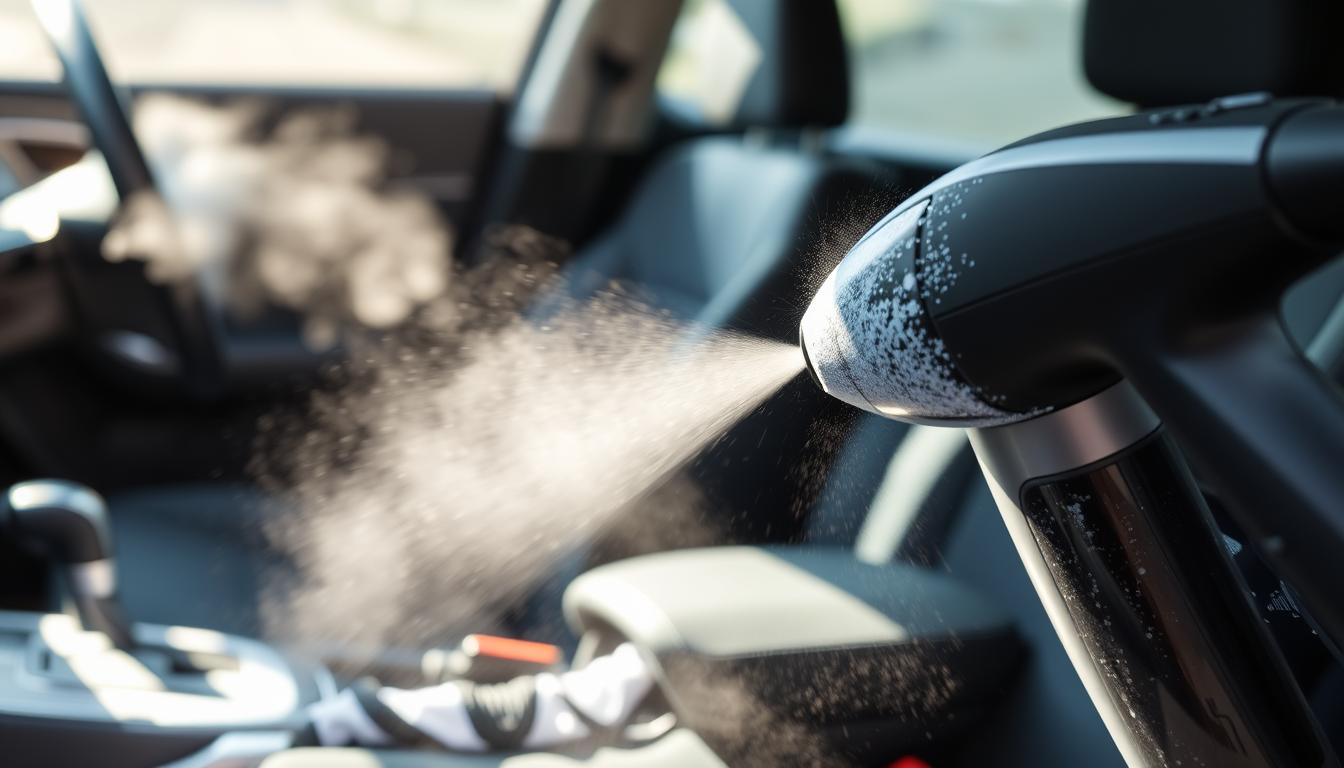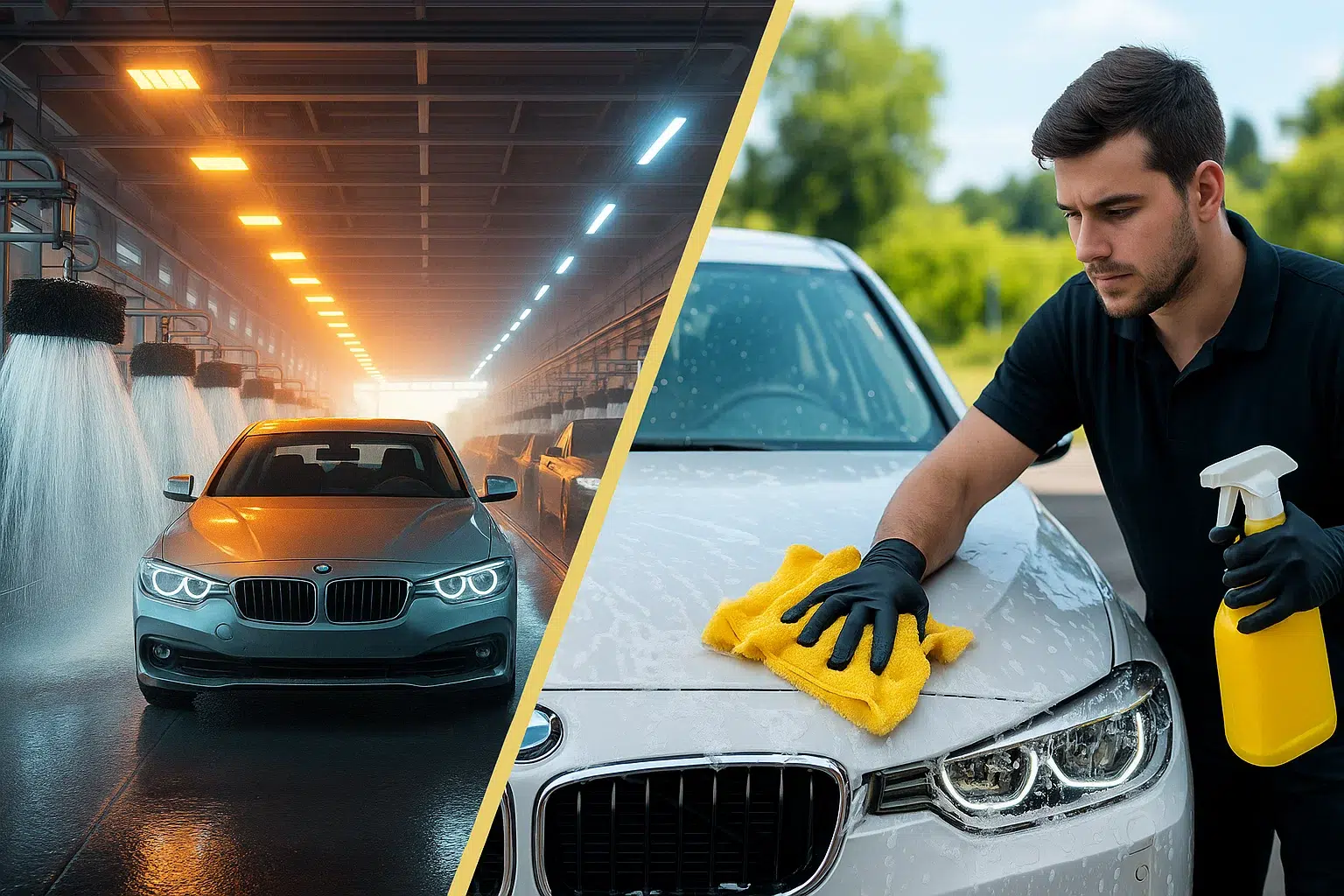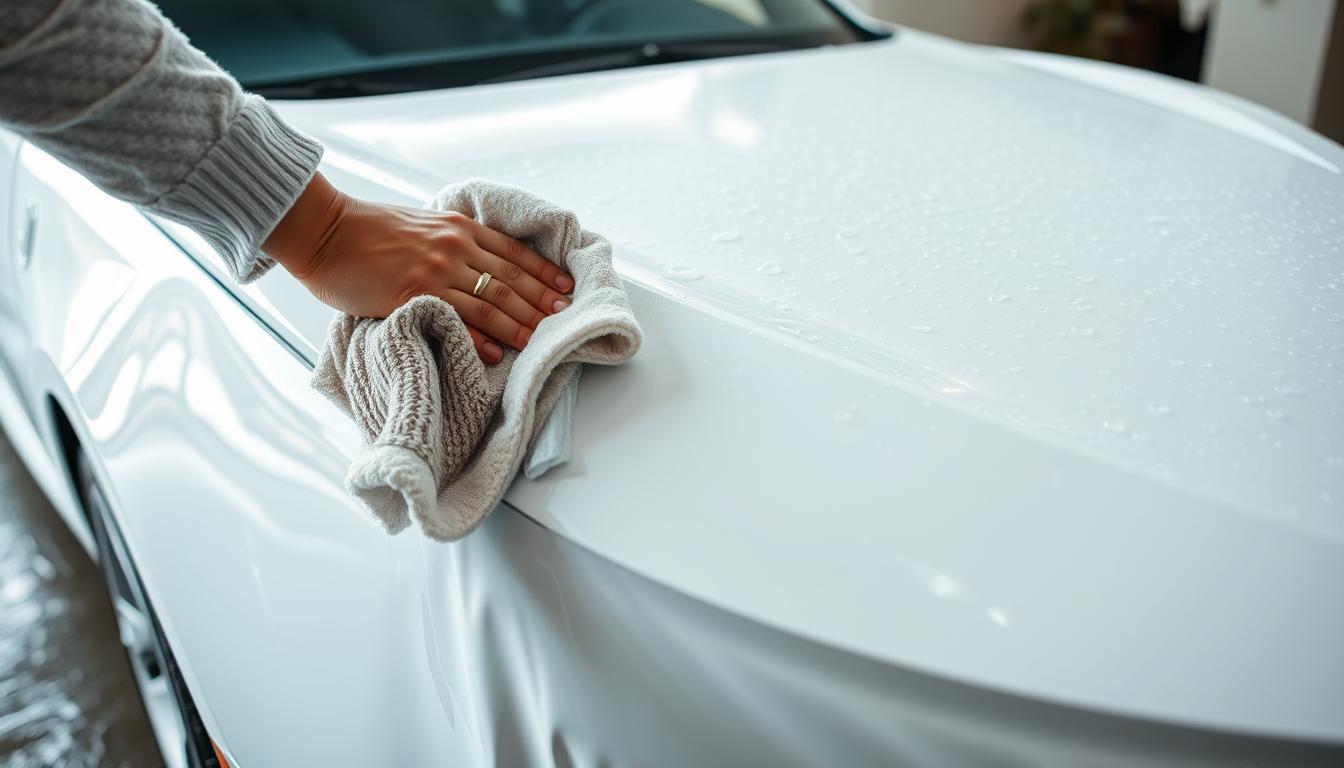Do you know what dangers are hiding inside your car? The inside of your car can be full of harmful germs. These germs can be very bad for your health.
Keeping your car clean is key to staying healthy. By cleaning and disinfecting regularly, you can fight off germs. This makes your car a safer place for everyone.
Learning how to get rid of car germs is a big step towards a healthier drive. In this article, we’ll show you how to keep your car’s inside clean and germ-free.
The Hidden World of Car Germs
Germs and bacteria can grow fast in your car, often without you noticing. The inside of your car is a special place where these tiny creatures can thrive.
Why Cars Are Breeding Grounds for Bacteria
Cars can become places where bacteria multiply because of their small spaces and many surfaces. Things like temperature, humidity, and food can help bacteria grow. For example, leftover food can feed bacteria.
High temperatures inside a car can make bacteria grow faster. Also, using air conditioning can make the air humid. This is good for mold and mildew to grow. And if you want to know how to get mold out of your car then must check out our blog on this topic.
Surprising Statistics About Vehicle Contamination
Research has found some shocking facts about germs in cars. Studies show that car interiors are full of bacteria and other tiny creatures. For instance, a car’s steering wheel can have more bacteria than a toilet handle.
To keep your car germ-free, you need to clean it regularly. Knowing how dirty your car is and cleaning it often can help keep harmful germs away.
Common Germ Hotspots in Your Vehicle
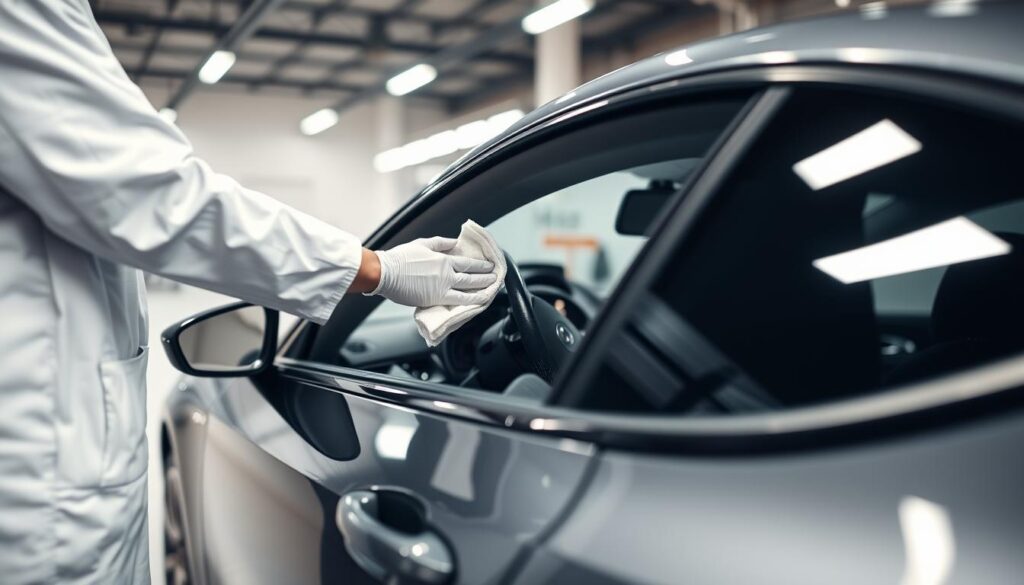
Knowing where germs hide in your car is key to keeping it clean and safe. Cars can be full of bacteria and viruses, mainly in areas people touch a lot.
High-Touch Surfaces: Steering Wheel, Door Handles, and Controls
Areas in your car that get touched a lot can collect germs. The steering wheel, door handles, and controls are often touched, making them germ magnets. Using strong car disinfecting products can help keep these areas germ-free.
Food-Related Areas: Cup Holders and Console
Places where food is stored, like cup holders and the console, can also spread germs. Leftover food and spills can attract bacteria, posing health risks. Keeping these spots clean and using the right car germ killer can help prevent this.
Air Circulation System and Vents
The air in your car can carry germs and allergens around. It’s important to keep the air system clean and working well. Regular maintenance, like cleaning or replacing filters, can help keep germs out.
By targeting these germ hotspots and using the right cleaning products, you can make your car a healthier place to drive.
Plus if you want to know in detail about how to remove coffee stains out of car seats then you must check out our latest blog on this topic.
Types of Car Germs and How to Kill Them
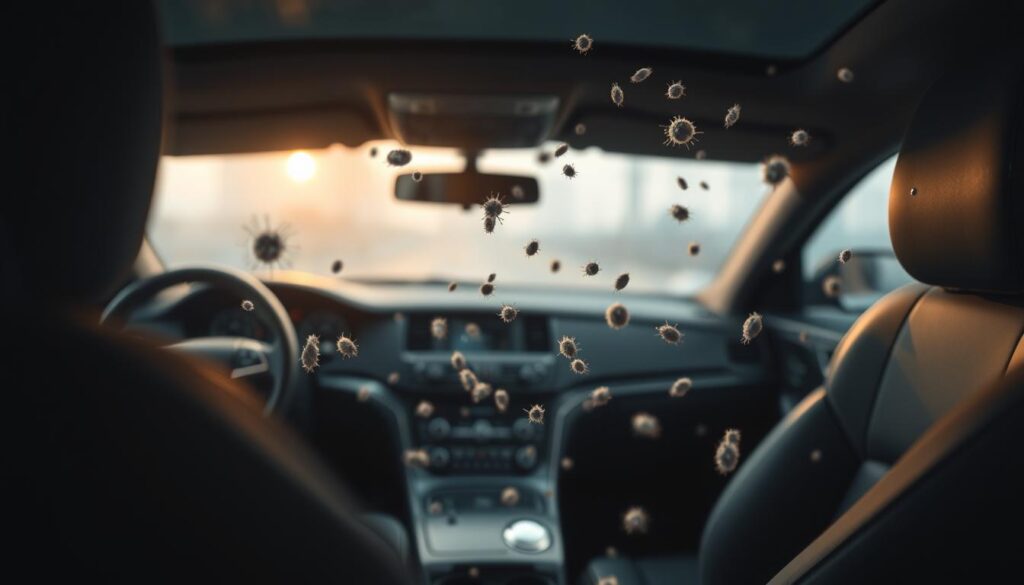
Knowing the germs in your car is key to keeping it clean and healthy. Your car’s interior can harbor bacteria, viruses, and fungi. These can cause bad smells, allergies, and infections.
Bacteria: Staphylococcus, E. Coli, and More
Bacteria are common in cars. Staphylococcus and E. Coli can cause infections. They can come from food, unwashed hands, or clothes.
To fight bacteria, clean high-touch areas like the steering wheel and door handles often. Use an EPA-approved disinfectant to kill bacteria on contact.
Viruses: Including Cold, Flu, and COVID-19
Viruses like the common cold, flu, and COVID-19 can live on surfaces for a long time. They spread through touch or being near contaminated surfaces.
To fight viruses, use a disinfectant that kills viral pathogens. Clean and disinfect surfaces often, more so during flu season or outbreaks.
Fungi and Mold: Addressing Moisture Issues
Fungi and mold need moisture to grow. They can spread in damp areas or where there’s water damage. To stop mold, make sure your car has good airflow and fix any water leaks fast.
For mold, use a product made to kill mold and mildew. Keep your car dry and well-ventilated to stop mold from coming back.
| Type of Germ | Common Sources | Effective Disinfectants |
|---|---|---|
| Bacteria (Staphylococcus, E. Coli) | Unwashed hands, contaminated food, clothing | EPA-approved disinfectants |
| Viruses (Cold, Flu, COVID-19) | Touch, proximity to contaminated surfaces | Disinfectants effective against viral pathogens |
| Fungi and Mold | Moisture, poor ventilation, water damage | Mold and mildew-specific products |
Best Car Germ Killers and Disinfecting Products
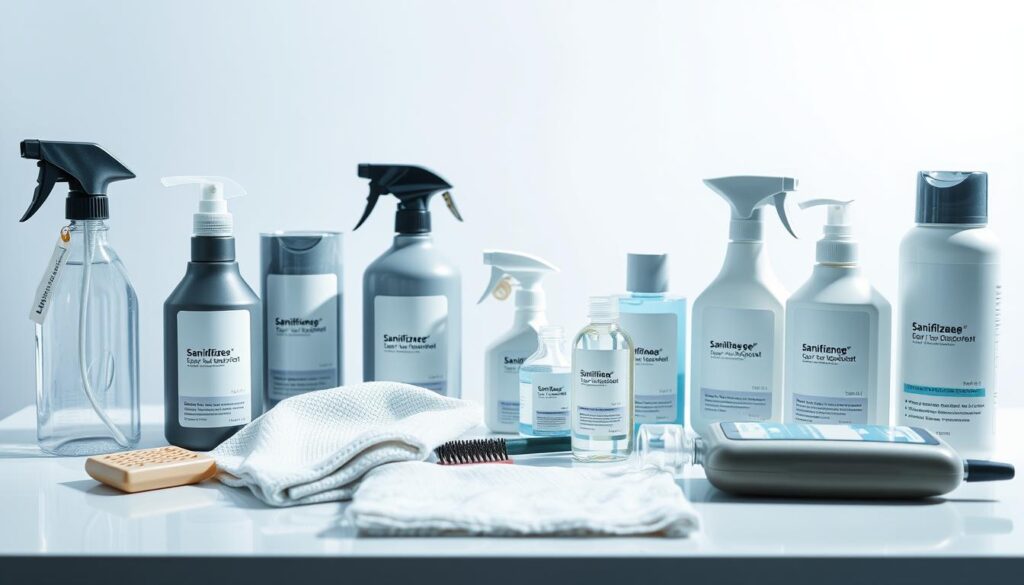
To keep your car clean and germ-free, you need the right products. The market has many options. You can find EPA-approved disinfectants, natural cleaners, and tools for tough spots.
EPA-Approved Disinfectants for Vehicle Interiors
The Environmental Protection Agency (EPA) has a list of approved disinfectants. These kill many germs, like bacteria and viruses. When picking a cleaner for your car, make sure it’s EPA-approved. Here are some top picks:
- Lysol Disinfectant Spray
- Clorox Disinfecting Wipes
- Clorox Disinfecting Spray
Natural Alternatives for Sanitizing Car Surfaces
If you like natural cleaners, there are good options. You can try:
- Vinegar-based solutions
- Essential oil-based disinfectants
- Baking soda-based cleaning products
These natural cleaners can sanitize your car. But, they might not kill all germs as well as EPA-approved cleaners.
Specialized Tools for Hard-to-Reach Areas
Some parts of your car are hard to clean, like between seats or under the dashboard. Special tools can help. You can use:
- Crevice tools
- Brushes with flexible heads
- Compressed air dusters
These tools make sure you clean every part of your car.
Effective Car Interior Hygiene Practices
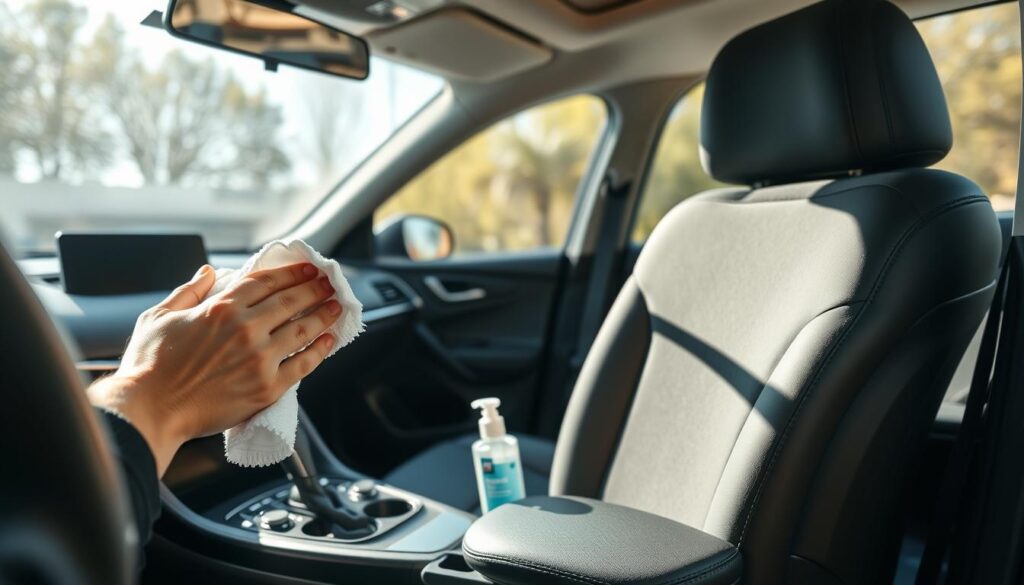
To keep your car interior clean, regular cleaning and disinfection are key. A clean car is not just more pleasant. It also helps keep you and your passengers healthy.
Step-by-Step Disinfection Process
Disinfecting your car’s interior takes a few steps. First, remove all trash and personal items. Then, vacuum the interior, focusing on crevices and upholstery where dirt and germs hide.
Key Disinfection Areas:
- High-touch surfaces like the steering wheel, gearshift, and door handles.
- Console and dashboard areas.
- Seats and seatbelts.
Use an EPA-approved disinfectant or a microfiber cloth dampened with a suitable cleaning solution to wipe down these areas. For hard-to-reach places, consider using specialized tools like cotton swabs or a small, soft-bristled brush.
Maintenance Schedule for a Germ-Free Car
To keep your car germ-free, set up a regular cleaning schedule. This should include:
- Weekly: Quick wipe down of high-touch areas.
- Monthly: Thorough vacuuming and cleaning of the interior.
- Quarterly: Deep disinfection of all interior surfaces.
| Maintenance Task | Frequency | Details |
|---|---|---|
| Quick Wipe Down | Weekly | Focus on high-touch areas like steering wheel and door handles. |
| Thorough Cleaning | Monthly | Includes vacuuming and wiping down surfaces. |
| Deep Disinfection | Quarterly | Detailed cleaning of all interior surfaces, including upholstery and crevices. |
Special Considerations for Different Interior Materials
Different interior materials need special care. For example, leather surfaces can be cleaned with dedicated leather cleaners. Fabric surfaces may need gentler products to avoid damage.
Material-Specific Tips:
- For leather: Use a leather cleaner and conditioner.
- For fabric: Opt for a gentle fabric cleaner.
- For plastic and vinyl: A mild soap solution is effective.
FAQs
How do you kill bacteria in a car?
To kill bacteria in your car, regularly clean high-touch surfaces like the steering wheel, gear shift, and door handles using disinfectant wipes or sprays with at least 70% alcohol. Steam cleaning and using UV sanitizers can also help eliminate germs from seats and upholstery.
How to kill bacteria in car AC?
To kill bacteria in your car’s AC, use an AC disinfectant spray or foam cleaner designed to clean the evaporator. Run the AC with the cleaner according to instructions, then air out the car. Replacing the cabin air filter regularly also helps prevent bacteria buildup.
What is a good disinfectant for a car?
A good disinfectant for cars is one that’s effective yet safe on interior surfaces—options include isopropyl alcohol (70%), automotive disinfectant sprays, or diluted vinegar solutions. Avoid harsh chemicals like bleach, which can damage car materials.
How to clean sick from your car?
First, remove solid waste with gloves and disposable towels. Blot liquids, then clean the area with a mixture of water and mild detergent. Disinfect with an enzyme cleaner or fabric-safe disinfectant spray to remove odors and kill germs. Air out the car thoroughly.
Conclusion: Creating a Healthier Driving Environment
Keeping your car clean and germ-free is key for a healthier ride. Cars can be breeding grounds for germs like bacteria, viruses, and fungi. These can harm your health. By knowing where germs hide and using the right cleaners, you can lower the risk of getting sick.
Staying on top of car cleaning is important. Disinfecting touchpoints and using EPA-approved cleaners can get rid of germs. Also, having a regular cleaning schedule for your car’s inside helps keep it germ-free. By following these tips, you can make your car a healthier place for everyone.
To keep your car germ-free, focus on using the right disinfectants and methods. This not only keeps your car clean but also makes driving healthier. Remember, regular cleaning and disinfection are essential for a germ-free car.

I am Tushar Balchandani, founder of Car Info Expert and someone who has been working extensively in the car industry as a car expert for 15 years. My aim is to provide useful truthful and reliable information to the readers based on my real experiences and hands-on experience. From buying tips to maintenance guides, I help readers make confident car-related decisions.


